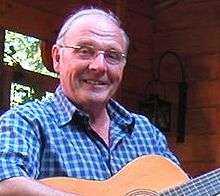Veluws dialect
| Veluws | |
|---|---|
| Veluws | |
| Native to | Netherlands |
| Official status | |
Official language in | Recognized in 1996 (as being part of Low Saxonian).[1] |
| Language codes | |
| ISO 639-3 |
vel |
| Glottolog |
velu1238[2] |
|
Geographical location of Veluws (colour: light green) among the other minority and regional languages and dialects of the Benelux countries | |
Veluws is a Dutch Low Saxon dialect which is spoken on the Veluwe.
Geographic distribution
Veluws is spoken in the Central Netherlands, in the Northwest of Gelderland.
Official status
The language was recognized by the government of the Netherlands in 1996 (as being part of Low Saxonian).[3]
Dialects

Veluws is usually divided into two main dialects, West-Veluws (West Veluws) and Oost-Veluws (East Veluws), these two dialects are reasonably similar but differ in grammar. For example: in Oost-Veluws they say ie warkt/wärkt (you are working) and in West-Veluws jie warken/waarken (you are working).
Lexical similarities
West-Veluws is also more influenced by Dutch. The closer one gets to the border with Oost-Veluws, the more the dialects differ from Standard Dutch. For example, in the central part where West-Veluws is spoken they say hie staot, in the North Western part they say hij steet compared to hij/hee stiet (he is standing) in Oost-Veluws, this already has a more Low Saxon influence. Hattem, the North Eastern part where Oost-Veluws is spoken has a heavy Sallandic influence.
Classification
It is not well defined what constitutes a language versus a dialect, but Veluws is generally considered to be a dialect of Low Saxon, classified Indo-European, Germanic, West, Low Saxon-Low Franconian, Low Saxon.[4]
See also
References
| Low Saxon edition of Wikipedia, the free encyclopedia |
- ↑ http://archive.ethnologue.com/16/show_language.asp?code=vel
- ↑ Hammarström, Harald; Forkel, Robert; Haspelmath, Martin; Bank, Sebastian, eds. (2016). "Veluws". Glottolog 2.7. Jena: Max Planck Institute for the Science of Human History.
- ↑ http://archive.ethnologue.com/16/show_language.asp?code=vel
- ↑ http://archive.ethnologue.com/16/show_language.asp?code=vel